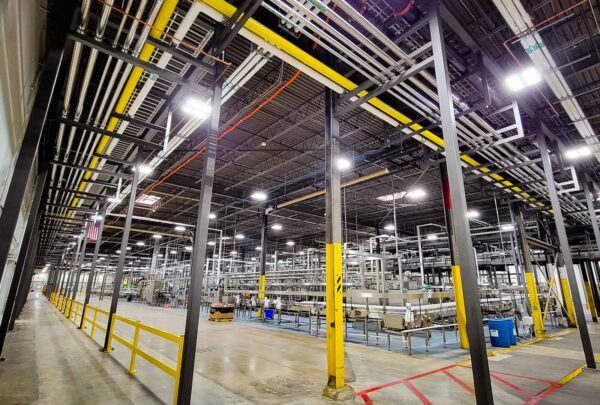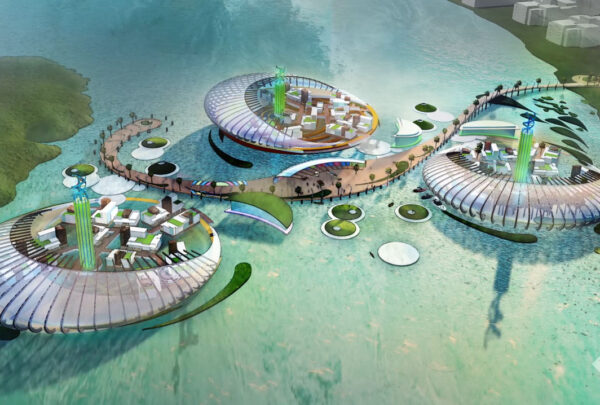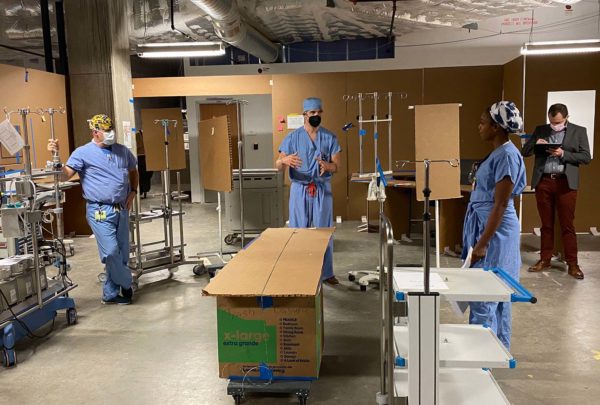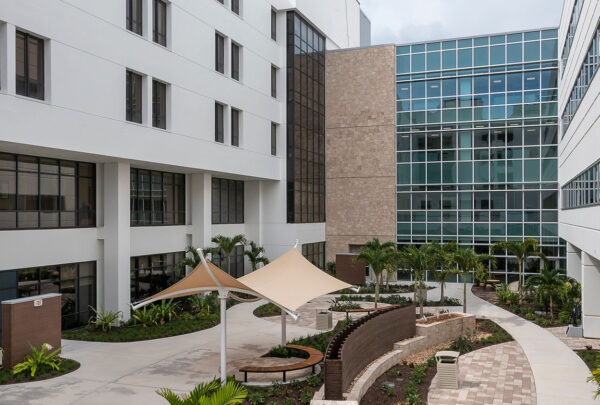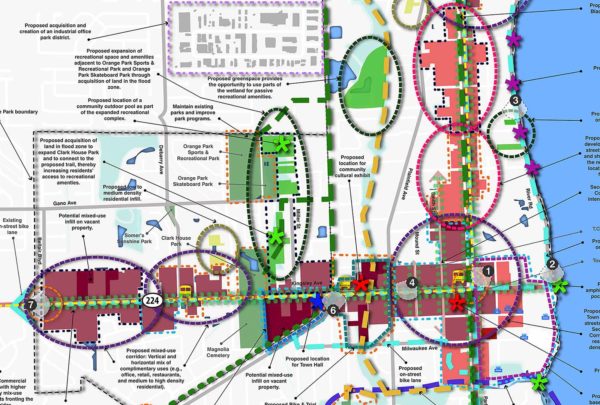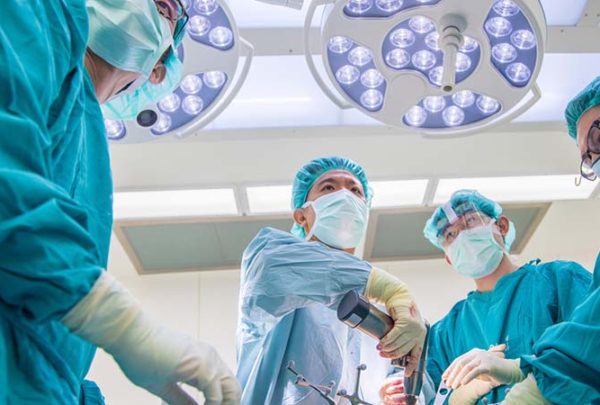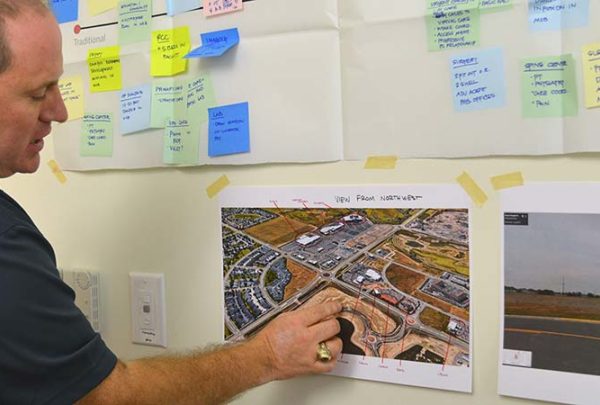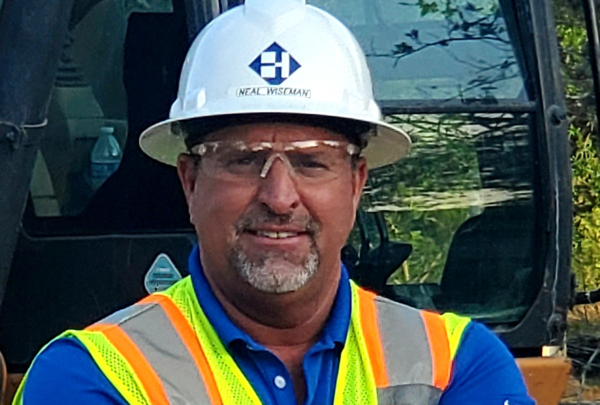Have you ever played with a sliding puzzle? A framed game, solved by shifting tiled pieces around one another to reveal an image. Even though the challenge is strategic, often cyclical, and at moments seemingly impossible, there is eventually a solution.
The design process for standard operating rooms is a lot like that. It is a process that draws on the interplay and interdependence of many pieces. However, the pieces are not game tiles: they are design considerations such as square footage, clearances, sterile zones, equipment, and support spaces.
Designing operating rooms for orthopedics follows suit. However, orthopedics has additional pieces contributing an extra layer of complexity and interest to the game.
Of those additional pieces, the biggest influencers are right-sizing the space, equipment, and the integration of surgical team preference.
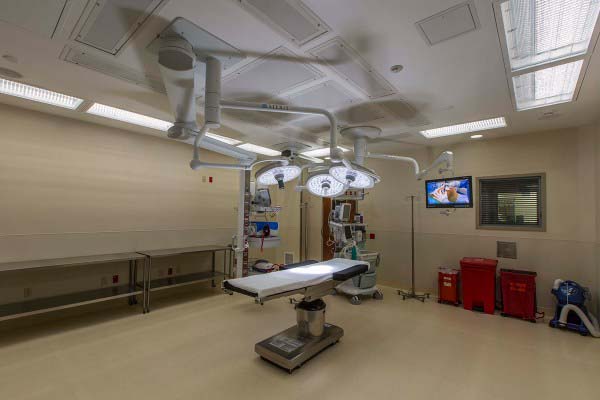
Right-sizing an operating room for orthopedic surgery involves more than minimum requirements established by enforceable codes. From a size perspective, Facilities Guideline Institute recommends for new construction a minimum of 600 square feet for “surgical procedures that require additional personnel and/or large equipment.” Orthopedics falls within this description.
Although spatial minimums are a good place to start, they may not provide enough space to create an efficient layout. Through a cyclical design process, the simultaneous consideration of clearances, equipment (both fixed and mobile), increased staff count, procedural flow, patient orientation, and surgical team preference helps guide either a square or more rectangular room configuration and informs overall size.
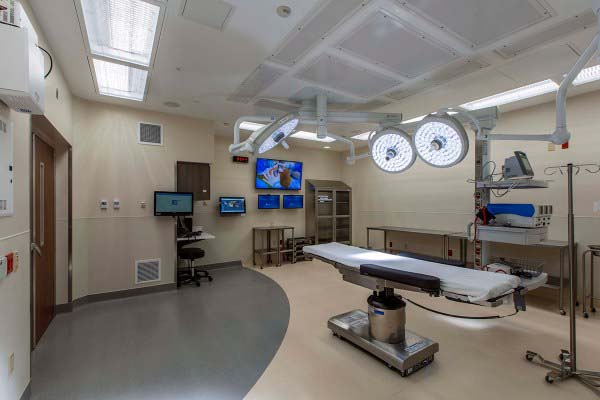
Fixed equipment like surgical lights, booms, and the surgical table also carry a good deal of influence when determining room size and configuration. Boom arms and surgical lights consume considerable amounts of spatial volume. Acknowledging potential encroachment into clearances and carefully locating booms and lights within the size, shape, and height of the room and around equipment is vital.
Orthopedic tables can become large when various accessories such as restraints, straps, braces, stabilizers, supports, positioners, suspension and traction devices, and table extensions are utilized. Table size and location are critical when working with ANSI/ASHRAE/ASHE Standard 170, which requires the positive pressure laminar air curtain (for Class B and C ORs) to overlap the bed by 12” on all sides.
Taking the Standard into consideration, surgical ceilings require careful coordination. On the ceiling plane, the boom and light mounting locations should be evaluated in relation to the laminar air curtain diffusers, convenience lighting, access panels, speakers, smoke detectors, strobes, sprinkler heads, or any anesthesia columns, medical gas hoses, or additional booms for monitors.
Once mounts are located, the extended reach and swing trajectory of boom arms should be evaluated in relation to the patient’s orientation. If booms are mounted more toward the periphery of the sterile field, the arms may not have enough reach to be positioned around the patient as needed. This is especially pertinent if the surgical bed must be rotated or moved significantly for multiple procedure types. In this instance, attention should be given to the design of the reflected ceiling plan for surgical flexibility. Designing for flexibility can become its own challenge since orthopedics encompasses several subspecialties, including joint replacement, sports injuries, spine, foot and ankle, shoulders, hands, fracture/trauma, deformities, and pediatrics.
Not without saying, orthopedics involves the use of additional quantities and types of mobile equipment and instrumentation, including surgical power tools such as saws, drills, and mills, or even robotics. Larger (and more) case carts, imaging equipment like C-arms, scopes, and cameras, as well as increased need for surfaces to accommodate management of equipment like procedure-specific instrumentation sets, bone cement mixers, and pry bars could be required. Keep in mind that with the increased quantity of mobile equipment comes a need for additional storage outside the operating room but still within the surgical suite.
Due to the interdependency of all items in an operating room, an early decision regarding equipment manufacturer is important. Changing vendor mid-design will create a ripple effect and can create a massive redesign or delay in a project because of potential incompatibility throughout equipment manufacturers.
From an architectural perspective, surgeon preference is a wildcard that is different for every project. Many factors, such as air temperature, equipment integration, satellite radio, robotics or lasers, video capability, and boom configuration, are unique to each surgical team and difficult to define in a generic way. When designing for a specific surgical team or group, understanding expectations at the beginning of a project can help prioritize and align the design process. Surgical teams provide great insight about current trends and procedures that, when coupled with architectural concepts, generate exemplary projects.
Every design puzzle has a solution. All it takes is skill, ingenuity, and a whole lot of tenacity. A solid strategy and open communication with the team can help innovatively arrange many interdependent elements to reveal an efficient, cohesive and successful project.



